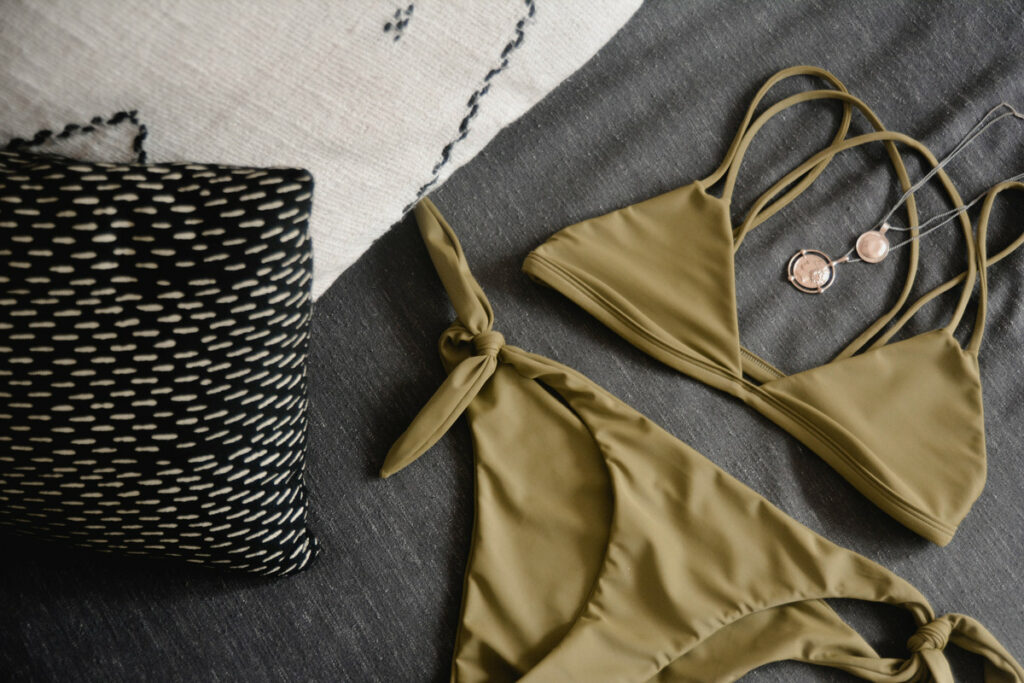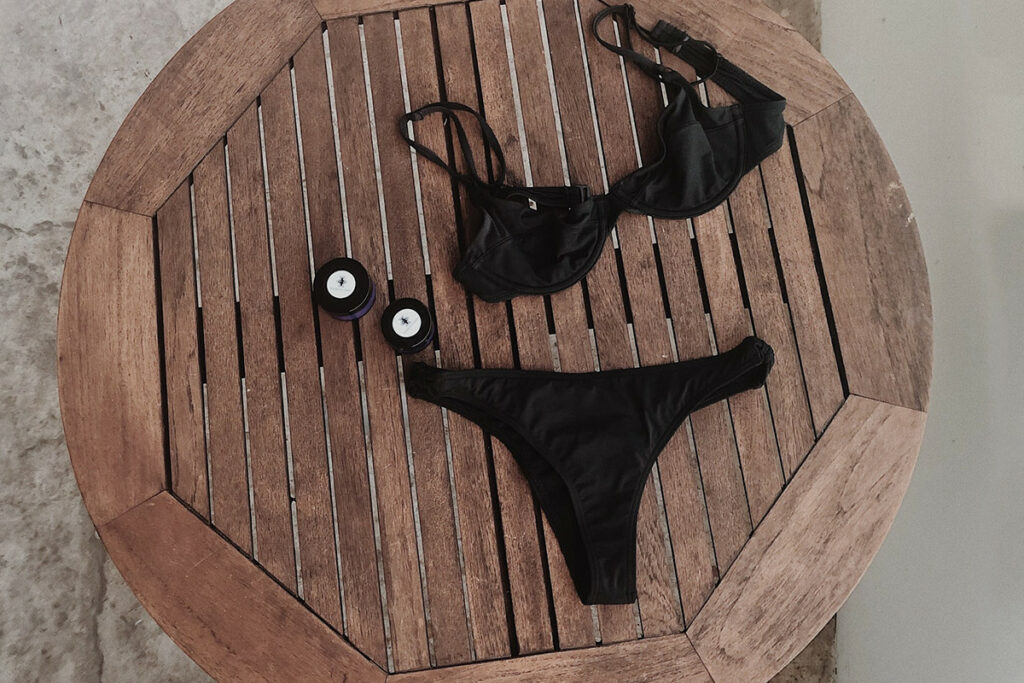
Swimsuits are the official outfits for the summer. If you’re anything like me, once that warm temperature hits, the swimsuits come out. But whether it’s for daily use or a single wear while on vacation, swimsuits go through a lot with the heat, salt water from the beach and chlorine from the pool. For a durable and long lasting bathing suit that stands up to those elements, you’ll be shelling out quite a bit.
So once you’ve made that initial investment in a gorgeous swimsuit, how do you protect it? Well, a lot of the protection will rest with how well you wash it.
Since most swim wear are blends of spandex, they can stretch or wear out too easily at times, if not properly cared for. So what do you do?
Continue reading below as we show you how to wash a swimsuit properly, along with the do’s and don’ts.
The Best Way to Wash a Swimsuit/Bikini

When you are ready to wash a wash a swimsuit or bikini, there are two options:
- In the washing machine
- Hand washing
Each method has its pros and cons.
The method you will choose depends on how much wear the swimsuit or bikini has gotten, as well as if it’s been worn in salt water or chlorinated water.
We will take a look at each option in detail below.
Machine Washing Considerations
Cold Water & Gentle Cycle Preferred: While machine washing is not at all recommended for swimwear, if you must wash your swimsuit or bikini in a machine, then use cold water.
Place the item in a laundry bag to protect it if possible. Also use a gentle cycle, stopping the machine half way in the cycle if possible. Rinse well but do not dry in the machine!
Detergent Matters: Whether you’re hand or machine washing, choose a gentle liquid or spandex-specific detergent. You’ll need just about a teaspoon for each swimsuit that you’ll be washing.
If you’re in a pinch, a bit of shampoo or distilled white vinegar can be used as a substitute to deodorize and get rid of harmful bacteria.
Hand Washing Guide

Hand washing is the ideal method for cleaning swimwear, especially those made of spandex, cotton or knitted fabric. Before you proceed with washing, you should soak in cool water for about an hour.
This will rid the fabric of salt and or chlorine if you were in a pool. This will allow the detergent to better penetrate the fabric and clean the swimsuit better.
If you happen to get a stain while wearing the swimsuit, then you should try to spot treat before washing. Spot treat after doing the pre-soak step outlined above.
Simply add a dab of detergent to the stain and gently rub it in with your thumb. Allow to sit out of the water for about 20 minutes, then proceed to washing.
Steps for Handwashing a Swimsuit/Bikini
- To wash your swimsuit, place it in a bowl of cool soapy water and gently rub the fabric between your palms. Try to cover as much of the fabric as you can. Be careful not to rub too vigorously as you could damage the fabric.
- Once the swimsuit appears clean, gently squeeze the water from it and place it into a pan filled with clear water for rinsing.
- The rinsing water should not have any added softeners or rinsing agents! Simple tap water should be fine.
- Swish the swimsuit around in the water a few times to remove any lingering soap particles.
Drying Your Washed Swimsuit
Never dry your swimsuit in a dryer. This is just too much heat for the spandex or Lycra fabric that’s often used in swimsuits.
After squeezing the water from your swimwear, you can pat it dry with a towel. Next, you can hang your swimsuit out in the open.
Avoid direct sunlight if possible though as UV rays can lead to fading. Most swimsuits are fast drying and will not need more than half a day out in the open air.
Bonus Swimsuit Tips
Do not iron your bathing suit, chances are that any wrinkles or kinks will be smoothed out once you get the swimwear on and hit the water.
For storage, ensure that swimwear is kept in areas free of moisture. Most swimwear material are conducive to mold and you want as best as possible to avoid creating a breeding ground for bacteria and fungi.
For hot tub hangouts, use an older or less expensive swimsuit. Hot tubs are famous for ruining clothes because of the heat and high level of chemicals in them. Cotton and other natural fibers should not be worn in hot tubs if you can avoid doing so.
